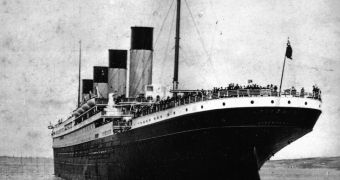Experts have found that an extremely odd community of microorganisms is currently devouring the wreck of the Titanic, the large cruise ship in the world at its time. The wreckage is 99 years old, and is in danger of disappearing soon.
Studies conducted starting in 2000 revealed the existence of a bacterial complex that is among the weirdest ever discovered on the planet. The microorganisms work together to consume all iron and steel on the massive boat, and leave behind trademark signs of their passing.
These extremophile bacteria resemble organisms that investigators would have expected to find in the liquid ocean beneath the surface of Europe, one of Jupiter's most interesting, icy moons.
The decade-old studies were conducted by microbial ecologist Roy Cullimore and scientist Charles Pellegrino. They said that the organisms which developed around the wreck has not known precedent.
As the microbes pass from one end of the ship to the other, they leave behind tremendously large rust mats, which are as large as 12, four-story brownstone homes. These are the results of the harvesting process, through which the microorganisms remove the iron from the Titanic.
The bacteria and microbes in the colony are capable of burrowing into layers of steel plating, disintegrating them piece by piece. Deep-sea investigations conducted in the North Atlantic, where the ship sank, found that any touch, no matter how small, turns all iron components into powder.
Another by-product that is left behind by the colony are rusticles, structures resembling icicles. They can grow to be about 30 feet (8-9 meters) in length, and submarines have found it dangling on all sides of the shipwreck, and at all locations.
These rusticles contain internal channels that allow water to flow through them, and to feed its inhabitants. Scientists show that these icicles are constructed similarly to how tree rings develop inside tree trunks, Daily Galaxy reports.
A total of 27 bacteria species were found to be collaborating in creating these rusticles, and DNA analysis of new samples collected from the wreck site show the presence of a previously-unknown guest, of the salt-loving Halomonas genus.
The work also revealed that the stern section of the Titanic is deteriorating a lot faster than the bow section is. The two ends of the ship look as if they are separated by 40 years of exposure to water.

 14 DAY TRIAL //
14 DAY TRIAL //